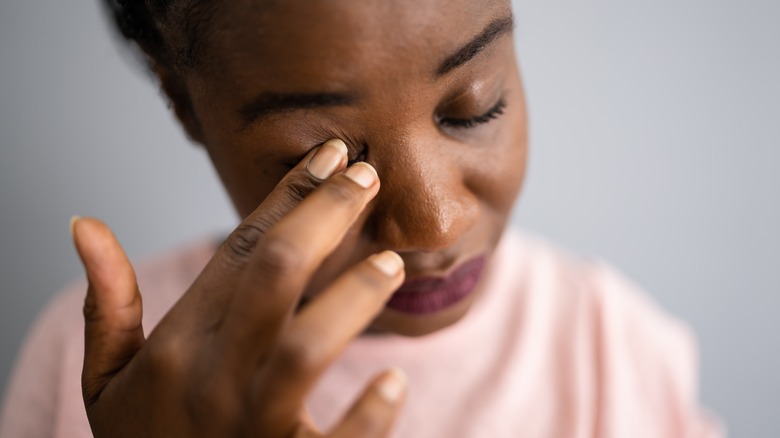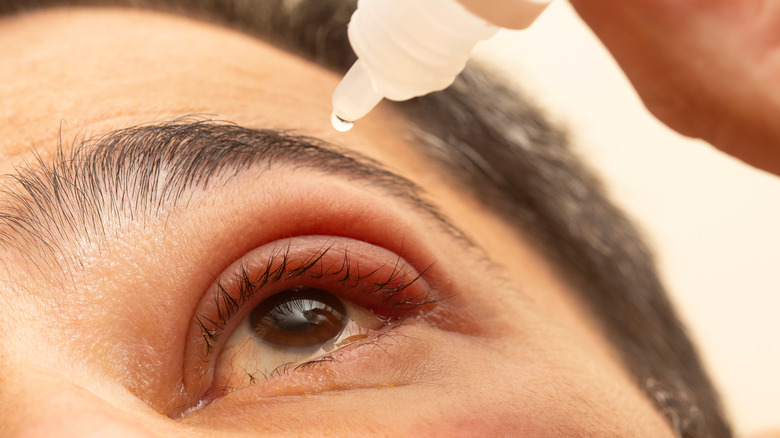Why You Should Think Twice Before Popping A Stye
A stye is a swollen bump that can form on either the inside or outside of the eyelid, near the eyelashes (via Cleveland Clinic). Often caused by the result of a bacterial infection or the blockage of an oil gland, styes can be painful. In addition to the emergence of the tell-tale bump, common symptoms of a stye include swelling, crusting, watery eyes, soreness, itchiness, light sensitivity, and the feeling of having something stuck in your eye. They are most common in adults. Those with dry skin, diabetes, dandruff, acne rosacea, or blepharitis tend to be more susceptible to developing styes.
Styes sometimes appear red, white, yellow, or pus-filled in color. While a stye may take on the look of a pimple, they are not one and the same (per Healthline). While it may be tempting to give it a squeeze, attempting to pop a stye can worsen the condition.
How to treat a stye
Popping a stye can lead to severe infection, reports Healthline. In addition, doing so can expose other areas of the eye to the infection, causing it to spread. You may also increase your risk of scarring, which can take the form of bumps, discoloration, and small holes in the eyelid.
Most styes are not long-lasting, and may begin to improve within two to five days. Treatment from a doctor generally includes the use of antibiotics. In moderate to severe cases, steroid injections or surgery may be needed. Individuals can also implement at-home treatments to help ease the discomfort of a stye, such as the use of a warm compress. Dr. Nate Lighthizer, optometrist and president of Intrepid Eye Society, tells Forbes, "The warm compress works by taking a hot washcloth or a Bruder mask and applying it to the eyelids for five to 10 minutes." Alternatively, a moderately warm teabag can also be used instead of a washcloth.
Founder of PIQUE Health, Dr. Nell Smircina, tells Forbes that the chrysanthemum flower may be particularly effective for mild styes. Individuals should also be mindful to avoid touching their eyes, consistently wash their hands, and avoid sharing makeup with others. If you find yourself experiencing symptoms of a stye, be sure to consult with your healthcare provider.


